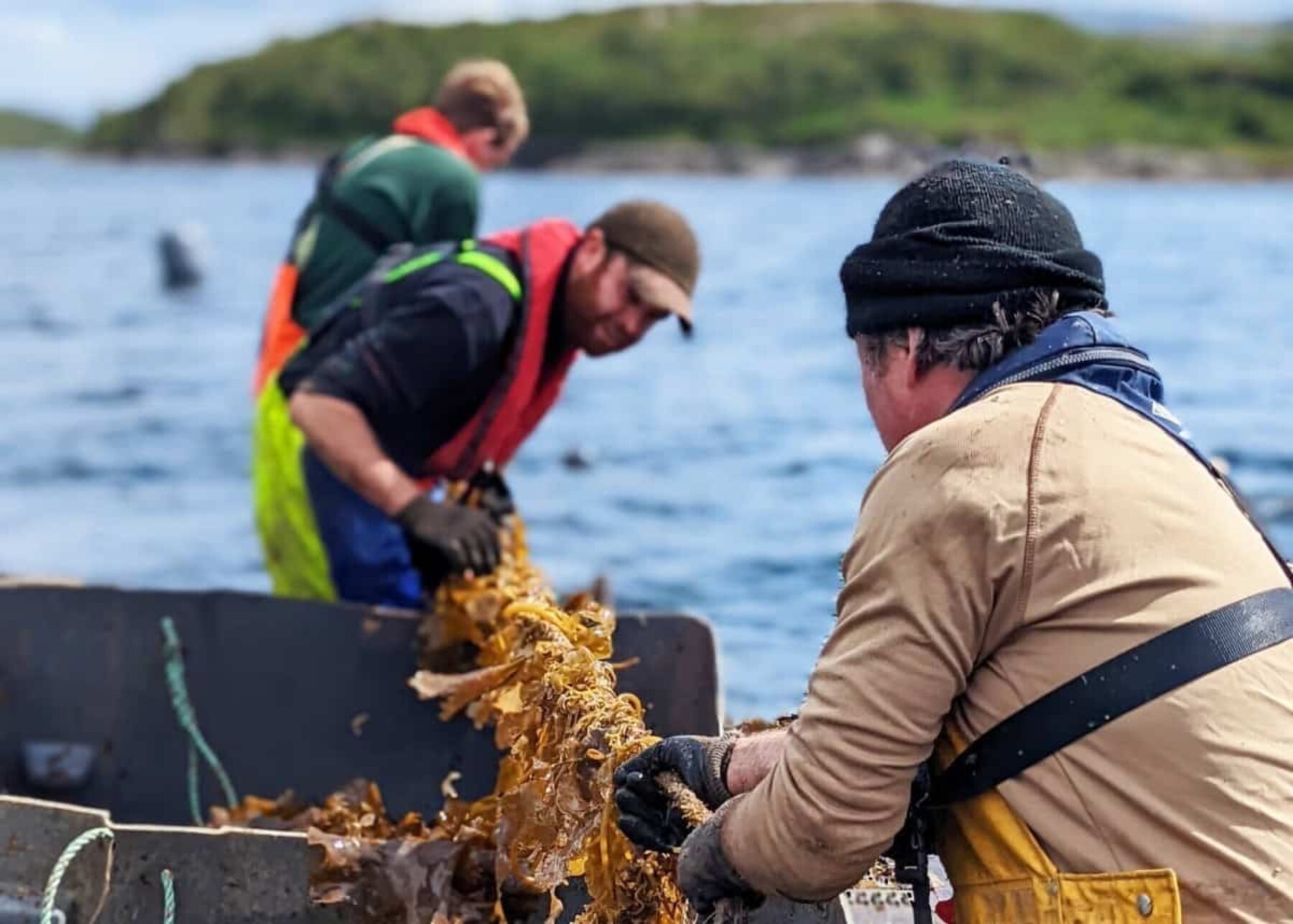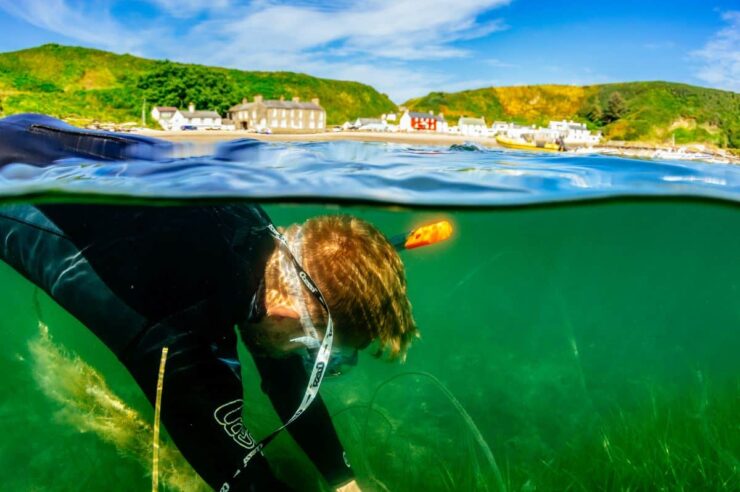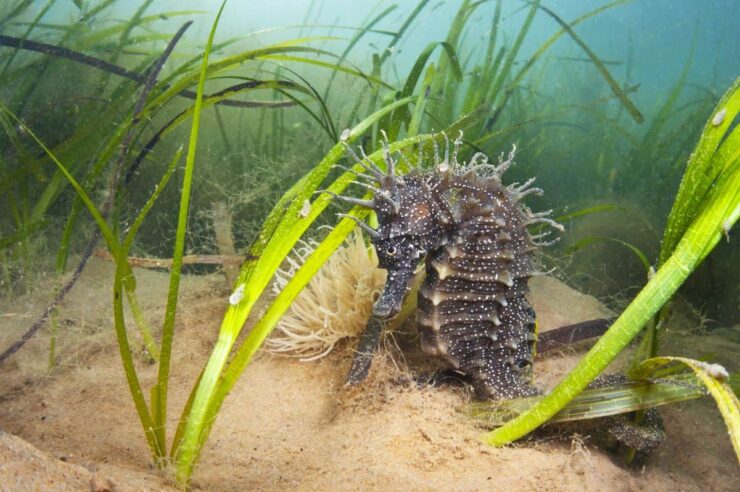In recent years, seaweed has gone from being a tasty Japanese side dish, to a way to rewild the seas, feed livestock, make plastics and absorb carbon. Can this wonder plant really help fix the planet?
Harvesting seaweed is nothing new. It’s been gathered for centuries in Britain for the production of soda ash – used in glass and soap production, and for bleaching linen. This was a significant industry in the 17th and 18th centuries. Later, it was collected for extracting iodine and for use as a gelling agent. By the turn of the 21st century, though, interest had waned.
But now there’s a surge of interest in seaweed farming, with new enterprises springing up around the coasts of northern Europe. Why? Simple, says Cait Murray, co-founder of a new Scottish seaweed business, EcoCascade. “It’s the fastest-growing biomass on the planet and flourishes without the need for land, fresh water, pesticides or fertilisers. Its sustainability is outstanding.”
More to the point, you can eat it, and more besides. For a full litany of its virtues, I turn to Vincent Doumeizel, author of The Seaweed Revolution, and a senior adviser on oceans and food to the UN. He’s studied seaweed’s potential more than most, and when I met him at the Hay Festival, he was carrying a jar of the stuff around with him, all the better to sing its praises.
Start with food. It’s a great source of nutrients, not just for people but animals, too, he says.
“It’s richer in protein than soybean meal, it’s naturally anti-bacterial, anti-inflammatory, anti-viral, and the best natural prebiotic in the world.” As such, it curbs the need for routine antibiotic treatment of livestock – a practice many believe is compounding the problem of antibiotic resistance in humans.
The advantages don’t stop there. Locally sourced seaweed beats imported soy meal on any number of sustainability metrics – why deforest the Amazon, asks Doumeizel, when we can harvest the stuff from our own waters? There’s excitement, too, about the potential of some seaweeds to curb methane emissions from cows by up to 90 per cent when added to their feed.
It’s naturally anti-bacterial, anti-inflammatory, anti-viral, and the best natural prebiotic in the world
Then there’s its potential as a fertiliser to boost plant growth and as a clean, green, biodegradable substitute for plastic. The recent winners of the Earthshot prize, Notpla, are just one of many startups looking to exploit its ‘post-plastic’ potential.
It’s also highly promising as a medicine: scientists at the Shanghai Institute of Materia Medica, drawing on traditional Chinese medicine, have developed a drug from it to treat Alzheimer’s, while recent studies by scientists in India, Japan, Europe and elsewhere appear to confirm the potential of seaweed to inhibit cancer as practised in Ayurvedic and ancient Japanese medicine. And unlike most modern agriculture, seaweed can act – in certain instances – as a carbon sink, not a source.
Put all those elements together, and the vertiginous upsurge of interest in farming the stuff is no surprise. Marine Scotland has now granted nearly 700 licences for seaweed harvesting, and new farms are springing up all the time. Most of these are focused on sugar or other kelp species, grown on rope lines in lochs or offshore.
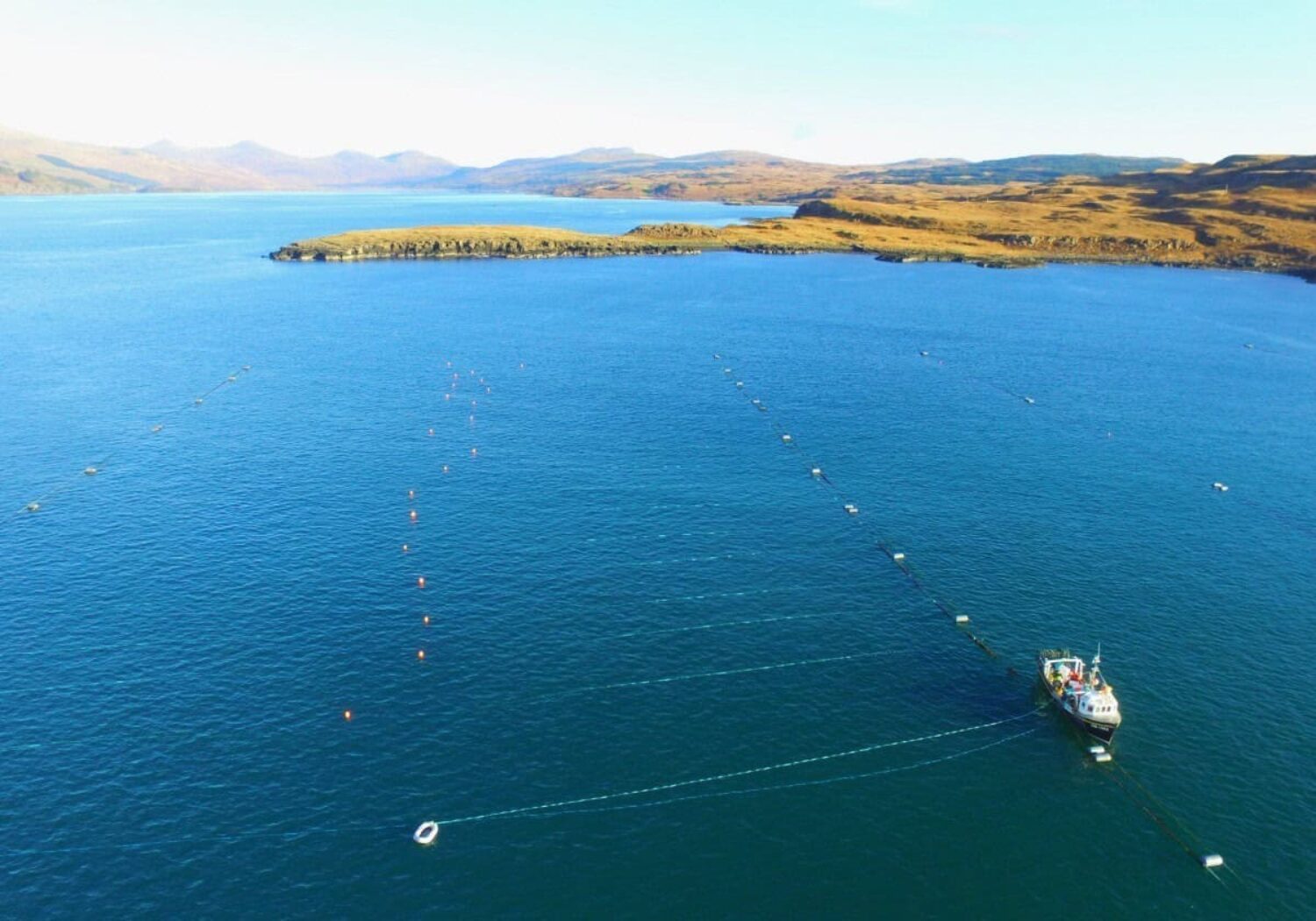
Hauling in the catch at Aird Fada, Scotland’s largest sugar kelp farm. Image: South West Mull and Iona Development
At present, they’re relatively small producers. The community-owned Aird Fada farm on the Isle of Mull is Scotland’s largest sugar kelp farm at just six hectares. And all are eyeing up new markets. Atlantic Mariculture grows kelp in Loch Sunart on the west coast of Scotland, and transforms it into a range of products on the Tangle Green label, including liquid fertiliser for garden centres and Kelp Cubes for cooking. Hebridean Seaweed, the UK’s largest industrial seaweed processor, based on the Isle of Lewis, recently underwent a £7m factory expansion to meet demand for their fish, dog and horse supplements.
At the moment, annual Scottish production totals around 100 tonnes. But as seaweed’s potential catches on, says Murray, this is predicted to grow to 30,000 tonnes by 2040.
Eco-Cascade, a new community interest company, aims to help accelerate the growth by both providing processing facilities and networking between farmers and buyers.
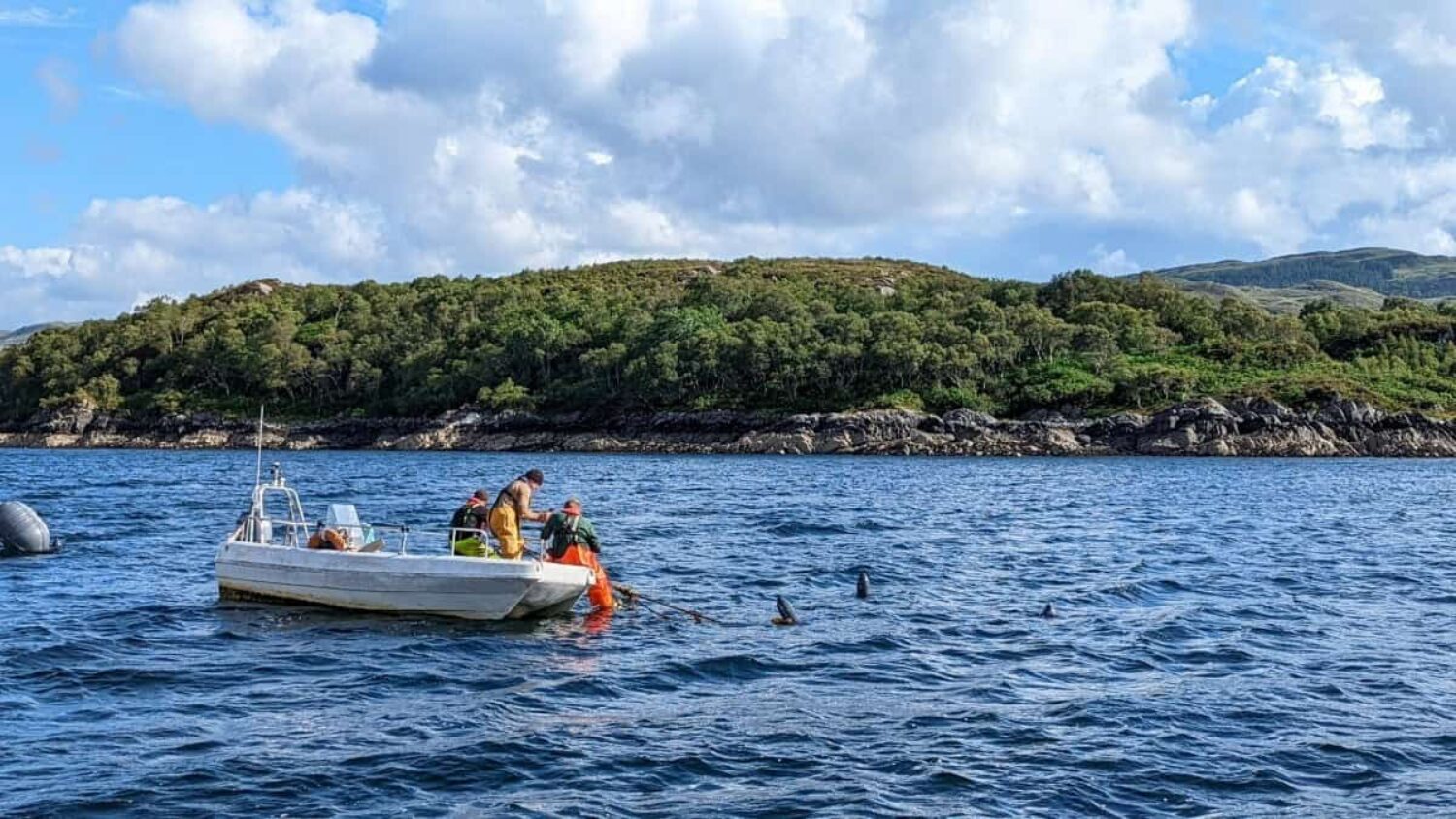
Harvesting seaweed in Loch Scridain, on the Scottish Isle of Mull. Image: South West Mull and Iona Development
Meanwhile, others are thinking big, too. Devon county council, along with the Eden Project and Plymouth Marine Laboratories, is backing a major new seaweed farm and processing site off the north Devon coast at Bideford. Nordic countries are catching on as well. In waters off the western coast of Sweden, the newly established Nordic Seafarm is setting out tens of kilometres of ropes to grow sea lettuce (Ulva).
Meanwhile, Amazon is investing around $1.5m (£1.24m) in an experiment off the coast of the Netherlands. Its aim: to see whether commercial seaweed production can thrive in an area of offshore wind farms, while at the same time sequestering large, measurable amounts of CO2.
There’s something of a gold rush feel to it all, and like any pioneering sector, there are pitfalls, too. Doumeizel points to the fact that, for all seaweed’s potential, “it’s not like it’s skyrocketing. We need to grow demand, to grow the market.” For now, production threatens to outpace demand. Murray echoes the point: “In the UK, seaweed is still seen as being a bit weird and strange.”
It’s the fastest-growing biomass on the planet and flourishes without pesticides or fertilisers
But the mood is changing, she adds. “There isn’t a brand name in every household yet, but you only have to walk round any supermarket to see it gaining ground, from sushi to seaweed as a substitute for table salt.” It can also be a much-needed source of protein for the fast-growing vegan sector, too, she adds.
Will seaweed save the world? On its own, most certainly not. Are we, perhaps, even in danger of becoming victims of a hype cycle? Like any fast growing green industry (think EVs, think biomass as fuel), some of the claims of seaweed enthusiasts should be taken with a pinch of (presumably seaweed infused) salt. Yet, there’s no doubt there is substantial potential there.
For Doumeizel, there’s an overwhelming logic in looking to the seas. “We cannot carry on feeding the world with the food systems we have in place now [with all their massive environmental impacts]. The oceans cover 70 per cent of the world’s surface yet contribute less than 3 per cent of our food. So if we want to maximise the potential of our planet to feed its people, let’s do it in the ocean.”
Images: Aird Fada
Help us break the bad news bias
Positive News is helping more people than ever to get a balanced and uplifting view of the world. While the doom and gloom of other news outlets becomes overwhelming, instead we’re here to support your wellbeing and empower you to make a difference towards a better future. And as Positive News’ audience and impact grows, we’re showing the rest of the media that good news matters.
But our solutions journalism has a cost and, as an independent, not-for-profit media organisation, we rely on the financial backing of our readers. If you value what we do and can afford to, please consider making a one-off or regular contribution as a Positive News supporter. From as little as £1 per month, you’ll be directly funding the production and sharing of our stories – helping them to benefit many more people.
Join our community today, and together, we’ll change the news for good.
